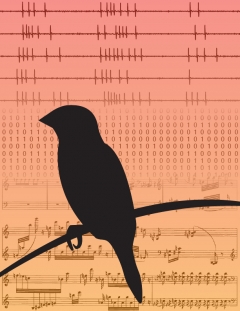You are here
Neural, Muscular and Computational Mechanisms of Vocal Control
Speakers
Abstract
The brain uses sensory feedback to calibrate the performance of complex behaviors. However, the biological and computational bases of sensorimotor learning remain mysterious. Our lab uses behavioral, physiological, biomechanical, and computational techniques to investigate motor control and vocal learning in songbirds. My talk will cover three ongoing lines of investigation into how songbirds correct vocal errors and precisely coordinate the acoustics of vocal production. First, our behavioral studies demonstrate that songbirds use vocal variability to constrain the speed and extent of vocal learning, and that a simple but powerful computational framework (iterative Bayesian inference) can account for the dynamics of learning across a number of experimental conditions. Second, neurophysiological recordings and computational analyses suggest that neurons in the motor system employ a millisecond-resolution spike timing code to regulate vocal behavior. Furthermore, single-unit recordings from muscle tissue in behaving animals and in vitro measures of muscle function demonstrate how the nervous system uses millisecond-scale spike timing to exploit the biomechanics of the vocal system. Third, comparative studies of a wide range of songbird and nonsongbird species (ranging in size from finches to ostriches) demonstrate that all species tested employ the same physical mechanism of sound production, and that this mechanism is identical to the one used to produce human speech. These data indicate that despite the different evolutionary origins of their vocal organs, humans and birds have converged upon the same physical mechanisms for producing communication sounds. Finally, I will present a survey of ongoing and future research projects, emphasizing how combining a wide range of experimental and analytical techniques to examine a complex natural behavior can yield important general insights into neural function.


